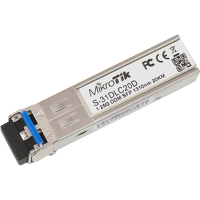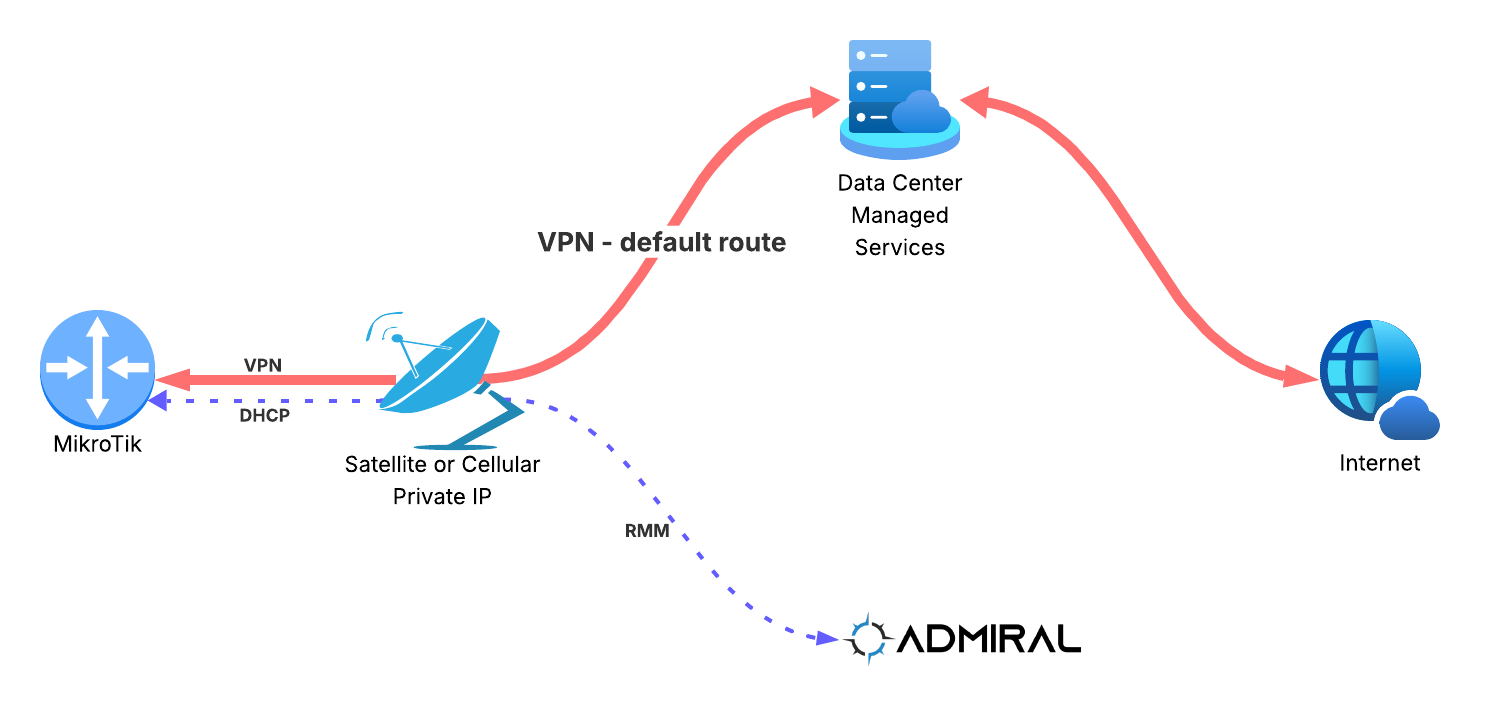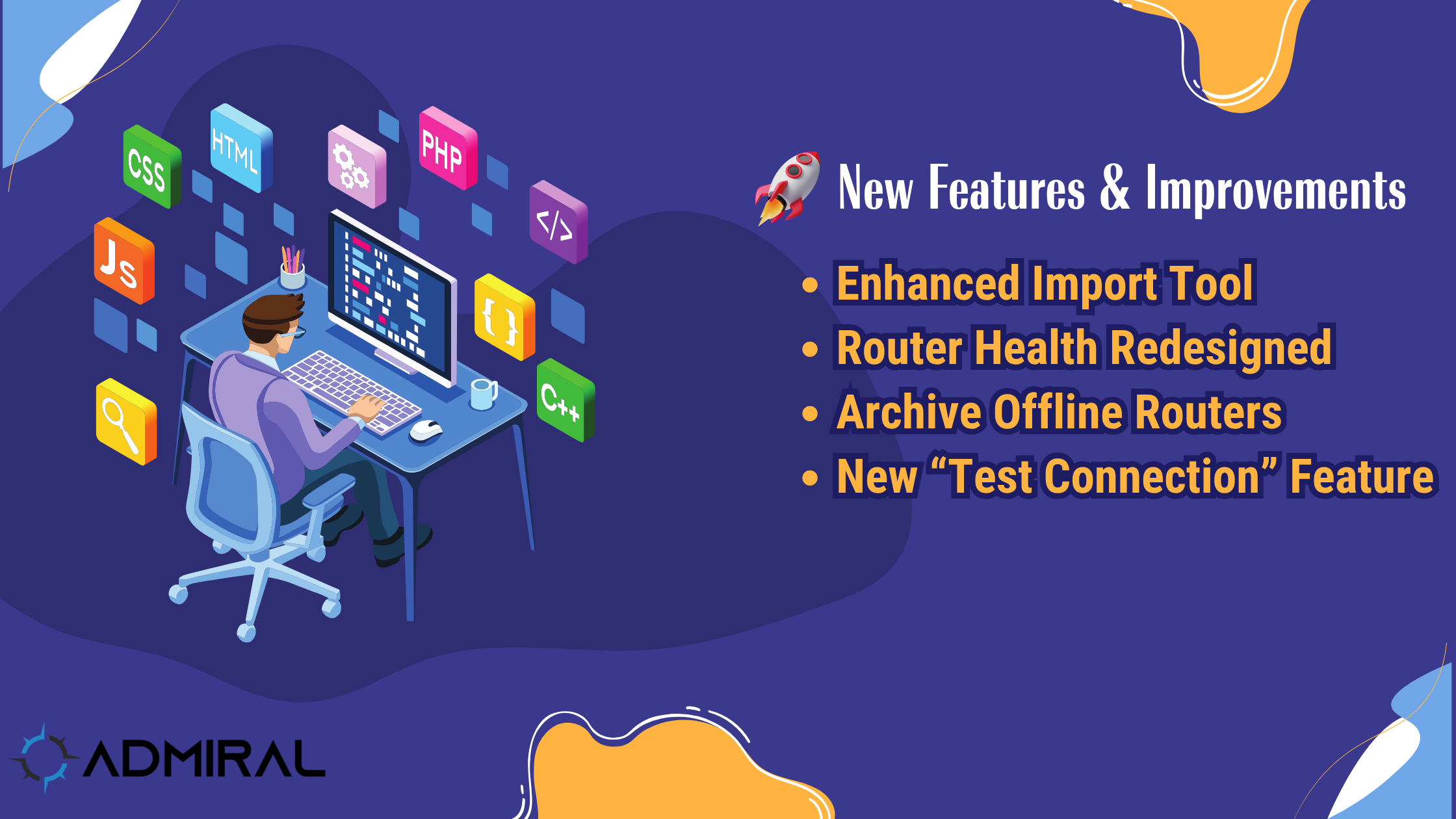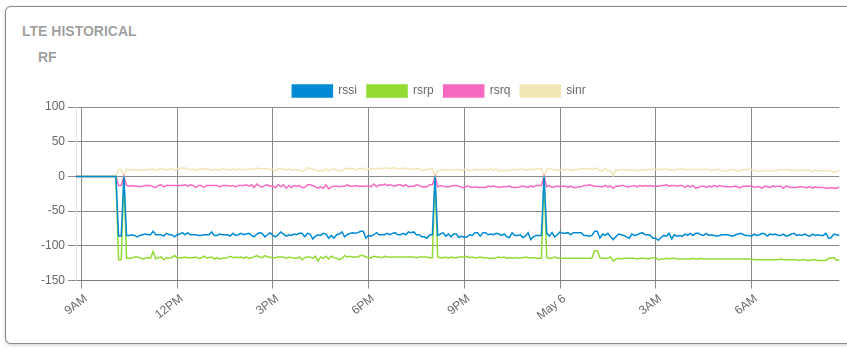Recently we helped a new Admiral customer onboard a MikroTik that is configured to send…

MikroFiber Packages – An Affordable Fiber Solution with Full Control
I sometimes consult with Service Operators to help them better architect their networks. In this capacity, I was asked if I had experience working with a MikroTik competitor for an upcoming fiber project. He claimed that in the industry, it seems like $500 per subscriber for a fiber to the prem (FTTP) electronics cost is considered an incredibly good deal, but I immediately thought MikroTik could do better. Let’s find out!
What do we need?
The requirements are simple enough:
- Deliver WiFi6 Speeds (Up to 1 Gig over WiFi)
- Access Point (AP)
- Fiber Unit on-premise
- Fiber Aggregation Mechanism
What is a Standard Deployment?
With Passive Optical Networking (PON), this would normally be accomplished with an OLT card (Optical Line Termination) in a chassis for the aggregation, an ONT (Optical Network Terminator) at each customers’ location or premises, and a router/access point to provide the WIFI.
What Does Mikrotik Offer?
Passive Optic Network (PON) is typically chosen due to perceived cost savings. It’s usually considered the least expensive way to deploy fiber, but since MikroTik doesn’t have any PON gear, this post is instead focused on Active Ethernet (AE). In many cases, AE is superior due to its ease of capacity expansion and dedicated bandwidth. If you need more speed – often you can just swap out SFPs!
This is a great fit for an MDU installation where you’ll be home running all the fiber. PON can still make sense if you want to bring one fiber into a neighborhood and you’re trying to avoid a cabinet with electronics – assuming you’re not interested in dedicated bandwidth or infinite scalability (because PON is a shared network infrastructure).
How does MikroTik Compare?

My first thoughts were to use the MikroTik CRS-326-24S+-2Q-RM switch for aggregation, the brand new MikroTik L009 for customer premises fiber termination, and a MikroTik HAP-AX3 for in unit/home WIFI6. Each subscriber would have access to 2.5Gbps of bandwidth and the latest and greatest WIFI6 MikroTik AP.
Let’s see the cost breakdown for 120 subs!
That makes a 120 Customer Pack
| Price per unit | Customers per unit | Quantity needed | Total cost |
| $599 | 24 per switch | 5 | $2,995 |
| $129 | 1 per fiber | 120 | $15,480 |
| $139 | 1 per customer | 120 | $16,680 |
| 10Gbps SFP? | 2 per customer | 240 | ??? |
| TOTAL | $35,155 |
$35,155 per 120 customers = $293 per customer, no SFP+ spec’d out yet
$293 per customer (no SFPs yet) Hmmm, can we do better?
Next I contacted Dennis Burgess, owner of LinkTechs (a top MikroTik consulting company and MikroTik distributor) and author of Learn RouterOS

He suggested we could bring the cost down even further by shooting for 1G instead of a mixture of 10G and 2.5G capabilities. With his plan, we switched the equipment as follows:

Aggregation Switch: CRS-328-4C-20S-4S+RM
This unit trades 10G SFP+ from above for slower 1G SFP, but still has plenty of ports and saves some dough by being a little lighter on the wallet, at the tradeoff of not being as easily able to upgrade to large numbers of customer 10Gbps broadband. Shooting for 1G instead of 10G gets the absolute best bang for the buck.
Fiber Customer Termination: RBFTC11
This is a huge cost saver – by taking the fiber termination straight down to a layer1 converter of fiber to copper, there’s no configuration needed and this unit can even be powered by the WIFI6 AP!
WIFI6 Access Point: HAP AX2
The AX2 has a bit less coverage and may not have as much gain and power as the AX3, but it’s still a beast of a WIFI6 Access Point with dual band AX, 802.11r/k and full UNII-1, UNII-2, UNII-3 and UNII-4 support!

240 SFP Optics
MikroTik MSRP: $29 (LinkTechs price – $22.40)
2x per customer
Cost breakdown
| Price per unit | Customers per unit | Quantity needed | Total cost |
| $449 | 21 per switch | 5 | $2,245 |
| $39 | 1 per fiber | 105 | $4,095 |
| $99 | 1 per customer | 105 | $10,395 |
| $22.40 | 2 per customer | 210 | $4,704 |
| TOTAL | $21,439 |
$21,439 per 105 customers = $204 per customer!
Is that the least expensive customer deployment in the industry for WIFI6 GIG WIFI – all optics included?
~$200 PER SUBSCRIBER, ALL-IN!
That’s unbelievable! With MikroTik, we’re able to get WIFI6 AP, ONT and OLT equivalent delivered over infinitely upgradeable Active Ethernet for right at 200 bucks. That’s a 60% savings over what my customer thought was a great price, and this is all retail with no discounts!
What about upgrading?
And it gets even better.
Upgrade 1 customer to 10G
Because Active Ethernet is not a shared network, this design is not oversubscribed and each switch can upgrade 1 customer to 10Gbps by adding a pair of appropriate SFP+ and replacing the fiber conversion unit (RBFTC11) with something more appropriate, like an RB4011 or CCR. That’s not nearly as easy with PON.
Upgrade lots of customers to 10G
Need lots of capacity – maybe for some heavy B2B? No problem with Active E! Swap out the switches as needed from 1G SFP handoffs to 10GSFP+ or bigger – you can go 25/40 or even 100Gbps with MikroTik AE!
Wait – But what about those copper ports on that switch?
Oh you noticed that, huh? Me, too – you can take those 4 copper ports and add 4 more $39 RBFTC11 per switch and get 4 more fiber customers attached. You could also consume an SFP+ for one or two more customers, but keep in mind that doing so would start to slightly oversubscribe, considering that you’re using 2x10Gbps SFP+ for backhaul/upstream – which again is considering zero oversubscription, using one more would make 3x10G for 30Gbps of upstream and 20 SFP + 4 copper + 1 SFP+ used with a 1Gbps SFP would be 25Gbps of downstream ports for customers.
And what about a 1000 pack?
Still $201.50 per subscriber, and this is all retail pricing! Contact your distributor, such as linktechs.net to order your gear today!
How about centralized management?
The one piece that’s missing here is a MikroTik centralized software. Managing a fleet of MikroTiks can take a lot of time and effort to build on your own. That’s where RemoteWinBox (RWB) can help. We have tools that enable your team to offer best-in-class support to your subscribers, and have full visibility and control to your network. RemoteWinBox helps make managing a large MikroTik deployment incredibly easy.
Get started and try it for 30 days, with unlimited MikroTiks, for only $2.00!
You can save thousands of dollars while still providing fiber internet with MikroTik and RemoteWinBox. Save time, save money, and provide top-tier internet to happy customers.









